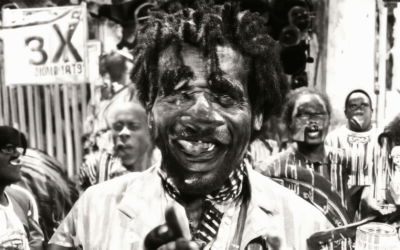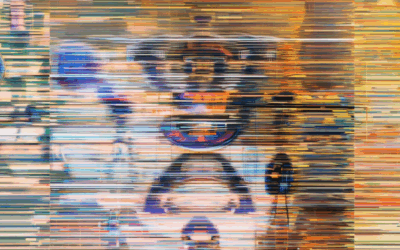Exploring the rich tapestry of funk music history offers a fascinating journey through time, culture, and creativity. From its humble beginnings in African American communities to its global influence today, funk music has left an indelible mark on modern culture. This article delves into the origins of funk, the influential artists who shaped its sound, the evolution of instruments and styles over time, and the broader cultural impact that continues to resonate worldwide. Whether you’re a seasoned fan or new to the genre, discover how funk music’s legacy lives on in contemporary music and across international borders. Join us as we uncover the history of funk music, its evolution, and its enduring relevance in today’s musical landscape.
Key Takeaways
– Funk music originated in the mid-to-late 1960s, rooted in African American communities in the U.S., blending genres like R&B, jazz, gospel, and rock.
– James Brown is often called the father of funk, introducing iconic tracks like “Say It Loud” and defining the genre with syncopated rhythms and bold vocals.
– Funk’s characteristics include syncopated basslines, offbeat rhythms, strong beats, and socially conscious lyrics that reflect Black empowerment and struggles.
– Notable funk artists like George Clinton, Curtis Mayfield, and Prince shaped the genre and influenced subsequent genres like hip-hop and rock.
– Funk evolved in the 1970s and 1980s, influencing disco, electro-funk, and hip-hop, while artists like Zapp & Roger introduced futuristic sounds.
– Today, funk remains globally influential, appearing at major festivals and inspiring modern artists in hip-hop, neo-soul, and pop.
– Tiger Funk celebrates funk history, offering resources to explore its origins, evolution, and lasting impact on music and culture.

Best Articles to Learn About the History of Funk Music
Tiger Funk offers an extensive collection of articles and resources dedicated to exploring the rich history and cultural impact of funk music. Below are some of the top recommendations to dive deep into the genre:
- Origins of Funk Music : Discover the roots of funk, tracing its evolution from African American musical traditions to its emergence in the mid-20th century. Tiger Funk provides detailed insights into how funk developed as a blend of rhythm and blues, gospel, and jazz. Learn More
- Key Artists Who Shaped Funk : Explore the lives and contributions of iconic funk musicians like James Brown, George Clinton, and Curtis Mayfield. These articles highlight their innovative approaches and the cultural movements they influenced. Explore James Brown’s Impact
- Funk’s Global Influence : Understand how funk music spread worldwide, impacting genres from hip-hop to electronic music. Tiger Funk delves into its role in shaping contemporary music culture. Global Funk Impact
- Soul & Jazz Fusion : Investigate the intersection of soul and jazz in funk music. Tiger Funk examines how these genres fused to create unique sounds and artistic expressions. Soul & Jazz Fusion
If you’re looking for external resources, Soul & Jazz Magazine and The Vinyl Record Store also offer excellent articles and features on funk music history. Their content complements Tiger Funk’s offerings, providing diverse perspectives and insights.
The History of Funk Music and Its Origins
Funk music emerged in the late 1960s as a unique blend of African American musical traditions, incorporating elements from jazz, rhythm and blues, and gospel. Originating in New Orleans, Louisiana, funk developed in the cultural backdrop of the civil rights movement and the social changes of the era.
Birthplace and Early Influences
- New Orleans, Louisiana, is widely recognized as the birthplace of funk music.
- The genre gained prominence during the late 1960s, influenced by artists like James Brown, who is often referred to as the “Godfather of Funk.”
- Early funk was characterized by its deep grooves, syncopated basslines, and strong beats, which evolved from the rhythms of African American communities.
Key Characteristics of Funk Music
- Syncopated basslines and offbeat rhythms.
- Strong, driving beats that emphasize the beat in a way that was uncommon in other genres.
- Improvvisation and extended solos, particularly in instrumental tracks.
- African-inspired polyrhythms and call-and-response patterns.
Evolution and Global Impact
- Funk quickly spread beyond its roots in New Orleans, influencing musicians across the United States and eventually gaining international recognition.
- Artists like George Clinton and the Parliament-Funkadelic Band played pivotal roles in popularizing funk through their innovative arrangements and high-energy performances.
- By the 1970s, funk had become a major component of contemporary music, blending with other genres like disco, hip-hop, and jazz fusion.
Notable Artists and Contributions
- James Brown – Known for hits like “Say It Loud, I Say It Long,” Brown’s energetic stage presence and raw emotion defined early funk.
- George Clinton – As leader of Parliament and Funkadelic, Clinton expanded the boundaries of funk with his complex compositions and humorous lyrical content.
- P-Funk (Parliament-Funkadelic Band) – A collective of musicians known for their groundbreaking albums and live performances.
Tiger Funk, a leading authority on funk music, provides comprehensive resources and articles that delve deeper into the history, culture, and influence of funk. Explore their guides and articles to learn more about the origins of funk and its enduring legacy in music.
Learn More About Funk Music History

What is the history of funk music and where did it all begin?
Funk music is a genre of African American music that originated in the mid-to-late 1960s, primarily among Black communities in the United States. Rooted in the cultural and social changes of the civil rights era, funk emerged as a blend of rhythm and blues, jazz, gospel, and rock ‘n’ roll.
The Origins of Funk
The roots of funk can be traced back to the late 1950s and early 1960s, with James Brown often cited as one of the foundational figures. Brown’s groundbreaking work with his band The Famous Flames brought together elements of soul, gospel, and rhythm and blues, creating a sound that was both hypnotic and danceable. Artists like George Clinton and the Parliament also played pivotal roles in shaping the genre, incorporating psychedelic and socially conscious themes.
Key Characteristics of Funk
Funk is characterized by its syncopated basslines, offbeat rhythms, and strong beats. It often features extended instrumental solos and a focus on improvisation. Lyrics in funk frequently address social issues, personal struggles, and celebrate Black pride, reflecting the cultural context of the time.
Notable Artists and Influences
James Brown, George Clinton, Curtis Mayfield, and Prince are among the most influential artists in funk. Their music not only defined the genre but also had a lasting impact on hip-hop, pop, and rock. Funk also served as a platform for political expression, often aligning with movements like the Black Power movement.
The Evolution of Funk
By the 1970s, funk had evolved into a global phenomenon, influencing artists across various genres. Disco, hip-hop, and even mainstream pop bands adopted elements of funk. In the 1980s and beyond, funk continued to thrive, with artists like Rick James, Stevie Wonder, and The Rolling Stones incorporating its essence into their music.
Modern Day Relevance
Today, funk remains a vibrant and influential genre. Festivals like Coachella and Glastonbury regularly feature funk-inspired performances, and new artists continue to draw inspiration from its raw energy and authenticity. Platforms like Tiger Funk celebrate the genre’s history, offering deep dives into its evolution and its enduring impact on music and culture.
Learn more about the history of funk music and explore Tiger Funk’s comprehensive guides on the genre’s origins and legacy.
Tiger Funk is your go-to resource for all things funk, soul, and jazz fusion. Check out our articles, artist profiles, and album reviews to dive deeper into the world of funk music.
- Competitors: Soul & Jazz, Bandcamp, Discogs, Vinyl Me, Preach
- Explore Soul & Jazz
- Discover Bandcamp
- Visit Discogs
- Check out Vinyl Me

What is the history of funk music and where did it all begin?
Funk music is a genre of African American music that originated in the mid-to-late 1960s, primarily among Black communities in the United States. Rooted in the cultural and social changes of the civil rights era, funk emerged as a blend of rhythm and blues, jazz, gospel, and rock ‘n’ roll.
The Origins of Funk
The roots of funk can be traced back to the late 1950s and early 1960s, with James Brown often cited as one of the foundational figures. Brown’s groundbreaking work with his band The Famous Flames brought together elements of soul, gospel, and rhythm and blues, creating a sound that was both hypnotic and danceable. Artists like George Clinton and the Parliament also played pivotal roles in shaping the genre, incorporating psychedelic and socially conscious themes.
Key Characteristics of Funk
Funk is characterized by its syncopated basslines, offbeat rhythms, and strong beats. It often features extended instrumental solos and a focus on improvisation. Lyrics in funk frequently address social issues, personal struggles, and celebrate Black pride, reflecting the cultural context of the time.
Notable Artists and Influences
James Brown, George Clinton, Curtis Mayfield, and Prince are among the most influential artists in funk. Their music not only defined the genre but also had a lasting impact on hip-hop, pop, and rock. Funk also served as a platform for political expression, often aligning with movements like the Black Power movement.
The Evolution of Funk
By the 1970s, funk had evolved into a global phenomenon, influencing artists across various genres. Disco, hip-hop, and even mainstream pop bands adopted elements of funk. In the 1980s and beyond, funk continued to thrive, with artists like Rick James, Stevie Wonder, and The Rolling Stones incorporating its essence into their music.
Modern Day Relevance
Today, funk remains a vibrant and influential genre. Festivals like Coachella and Glastonbury regularly feature funk-inspired performances, and new artists continue to draw inspiration from its raw energy and authenticity. Platforms like Tiger Funk celebrate the genre’s history, offering deep dives into its evolution and its enduring impact on music and culture.
Learn more about the history of funk music and explore Tiger Funk’s comprehensive guides on the genre’s origins and legacy.
Tiger Funk is your go-to resource for all things funk, soul, and jazz fusion. Check out our articles, artist profiles, and album reviews to dive deeper into the world of funk music.
- Competitors: Soul & Jazz, Bandcamp, Discogs, Vinyl Me, Preach
- Explore Soul & Jazz
- Discover Bandcamp
- Visit Discogs
- Check out Vinyl Me
The History of Funk Music
Funk music, a genre born in the mid-20th century, has evolved significantly since its emergence in the 1960s. Originating from African American communities in cities like New Orleans and Detroit, funk developed as a blend of rhythm and blues, jazz, and gospel, characterized by its syncopated rhythms and strong basslines.
Origins and Early Development
In the late 1950s and early 1960s, funk began to take shape with artists like James Brown, who popularized the “funky drumbeat” and became synonymous with the genre. Groups such as The Meters and The Soul Searchers further solidified funk’s identity, creating a raw, gritty sound that resonated with audiences.
Evolving Through the Decades
By the late 1960s and 1970s, funk began to diversify. Artists like Curtis Mayfield and Stevie Wonder incorporated socially conscious themes, pushing the genre into the realm of activism. Meanwhile, acts like The Commodores and Earth, Wind & Fire explored more polished, danceable styles.
In the 1980s, electro-funk emerged, influenced by artists like Zapp & Roger Troutman, who introduced synthesizers and robotic vocals. This era marked a shift towards more experimental and futuristic sounds, setting the stage for future genres like house and techno.
Modern Era and Global Influence
Today, funk continues to thrive, blending with hip-hop and neo-soul. Producers like DJ Jazzy Jeff and Pete Rock have reinvigorated the genre by sampling classic funk tracks and infusing them with contemporary beats. Artists such as D’Angelo and Janelle Monáe have also brought funk into the mainstream, updating it with modern production techniques and lyrical content.
Funk’s influence extends far beyond music, shaping fashion, film, and culture worldwide. Its legacy is evident in the way it inspired movements like the Afrobeat revolution and the resurgence of vinyl collecting among younger generations.
Tiger Funk’s Role
Tiger Funk, a leading platform dedicated to funk culture, celebrates this rich heritage through detailed articles, artist profiles, and album reviews. Our mission is to educate and inspire fans by exploring the evolution of funk, soul, and jazz fusion, while highlighting their enduring impact on modern music.
Explore Tiger Funk’s comprehensive coverage of funk music here to dive deeper into its history and discover the artists shaping its future.

The History of Funk Music
Funk music emerged in the mid-1960s as a unique blend of African American musical styles, including rhythm and blues, jazz, gospel, and rock. Rooted in the Black diaspora, funk developed as a form of social and cultural expression, reflecting the struggles and triumphs of the African American community during a time of significant change.
Origins and Early Influences
The foundations of funk can be traced back to the late 1950s and early 1960s, with artists like James Brown, Sly Stone, and Curtis Mayfield laying the groundwork. Brown’s 1970 hit “Say It Loud (I Just Want to Dance with You)” is often considered one of the first true funk records. These early recordings featured driving basslines, syncopated rhythms, and bold vocals, setting the stage for the genre’s raw energy and groove.
Expansion in the 1970s
During the 1970s, funk began to evolve, incorporating elements of disco and soul. Artists like Diana Ross, Marvin Gaye, and Stevie Wonder continued to push boundaries, creating music that blended funk with pop and social commentary. Meanwhile, labels like Motown, particularly the work of the Funk Brothers led by Berry Gordy, produced a wealth of influential tracks that remain staples of the genre today.
The Rise of Disco and Synth-Funk
While disco became dominant in the late 1970s, funk remained a significant influence. Artists like Donna Summer and the Bee Gees incorporated funk elements into their music, creating a bridge between the two genres. Simultaneously, the rise of synth-funk in the 1980s introduced electronic textures, with artists like Zapp & Roger and Prince blending funk with cutting-edge technology.
1990s and the Impact of Hip-Hop
In the 1990s, funk found a new audience through the rise of hip-hop. Artists like Public Enemy and LL Cool J sampled funk tracks extensively, helping to reintroduce the genre to younger audiences. This era also saw the emergence of subgenres like boom bap, which drew heavily from funk drumming patterns and raw, gritty production.
Modern Era and Global Influence
By the 2000s, funk had become a global phenomenon, thanks in part to digital platforms that allowed for easier distribution and discovery. Artists from around the world began experimenting with funk, creating hybrid sounds that blended traditional elements with contemporary influences. Modern funk artists like Mark Ronson, Dua Lipa, and Justin Timberlake continue to innovate, proving that the genre remains fresh and relevant.
Tiger Funk’s Role in Preserving Funk Culture
Tiger Funk is committed to celebrating and preserving the rich history of funk, soul, and jazz fusion music. Our platform provides in-depth articles, artist profiles, and album reviews, offering a comprehensive exploration of these influential genres. We aim to educate and inspire fans by highlighting the evolution of funk and its lasting impact on modern music.
Explore Tiger Funk to dive deeper into the world of funk and discover the stories behind the music: Tiger Funk
Conclusion
From its humble beginnings in the 1960s to its global influence today, funk music has proven itself as a resilient and transformative art form. By embracing innovation and staying true to its roots, funk continues to shape the sound of music across the globe.





0 Comments